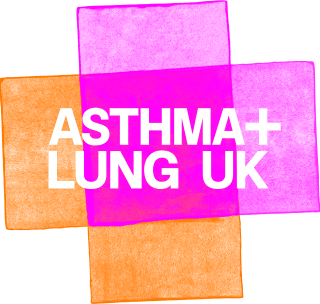How is a pulmonary embolism treated?
Anticoagulant drugs
Anticoagulant drugs are the main treatment for pulmonary embolism. They'll stop the clot getting bigger while your body slowly absorbs it. Once the blood clot has been absorbed by your body, the blood vessel in your lung will not be blocked. The medicine also reduces the risk of further blood clots developing.
If your doctor thinks you might have a pulmonary embolism, they'll usually give you an anticoagulant injection. They'll give you the injection before you get any test results as a precaution. If your test results confirm that you have a pulmonary embolism, you’ll need to have more anticoagulant injections for at least five days.
After you have been treated with anticoagulant injections, you’ll usually need to take anticoagulant tablets for at least three months to prevent blood clots coming back. But, some people will need to take them for a longer amount of time. People who have had a significant, life-threatening pulmonary embolism, recurrent clots or an unprovoked clot may be advised to take the medicine for the rest of their life.
There are different types of anticoagulants, so your doctor will discuss with you which is the best one for you. Types of anticoagulant drugs include:
Your doctor or pharmacist should tell you how much of your medicine to take and when to take it. Most anticoagulant medicines need to be taken at the same time, once or twice a day. It’s important to take your medicines as prescribed because the effects of some types of anticoagulants can start to wear off within a day. You should not stop taking your medicine unless your doctor has told you to.
Side effects of anticoagulants
Like any medicines, anticoagulants may have side effects. These will vary from person to person. One of the most common side effects is bleeding more easily and excessively. Because of this, if you’re prescribed warfarin you'll need regular blood tests to make sure you’re on the correct dose. Newer anticoagulant tablets generally do not need regular blood tests. If you’re not sure what anticoagulant you’re on, ask your healthcare professional.
Things to consider when taking anticoagulants
Anticoagulants interact with many other medicines, including herbal remedies. They can also be affected by alcohol and certain foods like leafy green vegetables chickpeas and liver.
You can read more about things to consider when on anticoagulants on the NHS website, including food and drink, surgery and other medications. Your doctor, nurse or pharmacist can also help you to manage your medicines.
Other treatments for pulmonary embolism
If you have a large, or life-threatening pulmonary embolism, you may receive thrombolytic therapy. This involves a drug being injected directly into your vein to try and dissolve the pulmonary embolism. Less commonly, you may need surgery to remove the clot.
Will I be treated in hospital or at home?
If you’re diagnosed with a pulmonary embolism, doctors will think about the safest place for you to be treated. Depending on your risk, this may be in hospital or at home.
If you’re treated at home, your doctor should give you information about possible complications, your treatment, and the name of someone you can contact at the hospital. You should have an initial review within seven days of leaving hospital. You should also have a follow-up appointment with a specialist doctor within three to six months.
Recovering from a pulmonary embolism
After your pulmonary embolism, your GP will usually get in touch with you. But some people may go back to a special clinic based in a hospital. This is to make sure you understand how to stay well and there are no problems with the medicine you’re taking. If diagnosed and treated quickly, most people recover fully from a pulmonary embolism.
Most people will not need to stay in bed while recovering. If you feel well enough you should try to do your normal daily activities.
How long will I feel breathless?
It’s common to feel breathless for a few weeks or months after a pulmonary embolism. If you suddenly develop significantly worse breathlessness, you should seek urgent medical attention.
If your breathing has not returned to normal after three months, your doctor may recommend some more tests.
Call 999 or go to A&E if:
- you’re finding it very hard to breathe
- you feel pain in your chest or upper back
- your heart is beating very fast
- someone has passed out.
These could be signs of a pulmonary embolism or another serious condition.
Can I exercise after a pulmonary embolism?
While recovering from a pulmonary embolism, it’s best to avoid intense exercise like running and cycling.
Once your symptoms have started to get better, you can slowly increase your activity and start to do some light exercise.
If you feel breathless or unwell, you should get plenty of rest and begin exercising again when you’re feeling better. If you’re not sure where to start with getting active, you could:
- try our Keep Active programme – a series of videos to help people with lung conditions move more in your own time, at a pace that suits you.
- download our Keep Active handbook – try different exercises and record your progress as you go.
- try the NHS home workout videos – cardio, strengthening and stretching exercises.
You should avoid contact sports or other activities which may increase your risk of bleeding while you are taking anticoagulants.
If you’re not sure whether you’re ready to start exercising again, speak to your GP.

Get support
Call or WhatsApp our Helpline for support with your condition. Get advice on your medicines, symptoms or travelling with a lung condition, or just call us to say hello.






